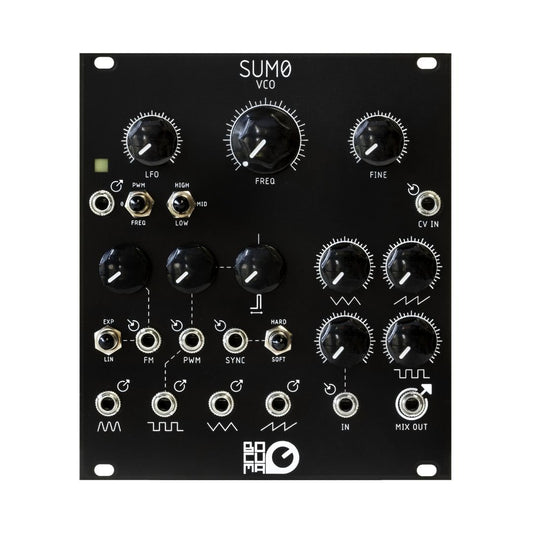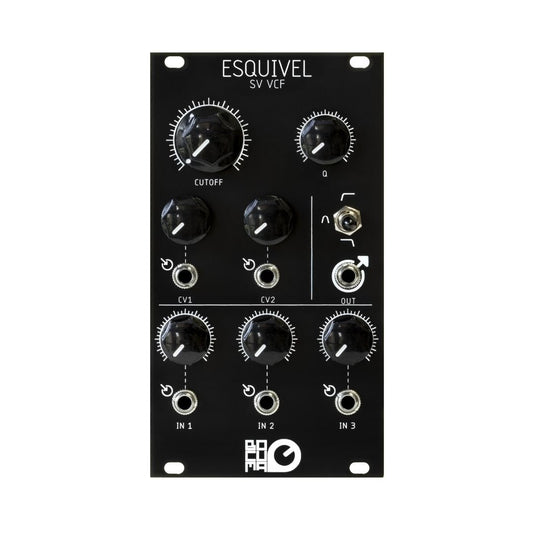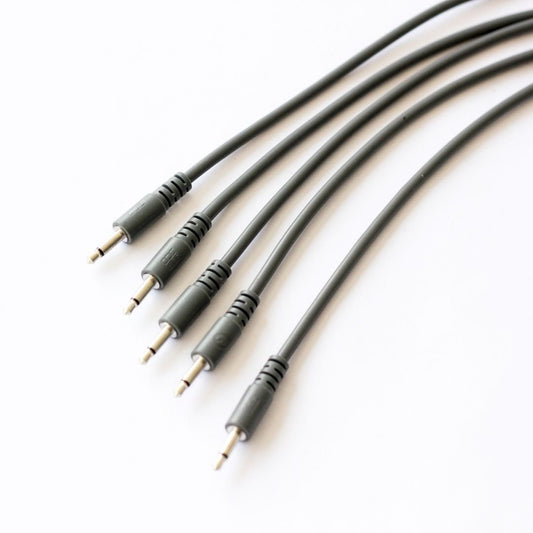Welcome to the second chapter of our blog series, where we explore how every knob turn and cable connection has the power to shape sonic landscapes like never before. In this chapter we will explore how one element stands out as a magician behind the scenes: the Low Frequency Oscillator, or LFO. If you're delving into the enchanting world of modular synthesizers, get ready to unlock the secrets of LFOs and discover how they weave their spellbinding charm into your soundscapes.
Understanding the LFO: A Primer
Imagine a gentle, rhythmic wave subtly altering the pitch or volume of your synthesizer's sound. That's the magic of an LFO in action. LFOs are oscillators designed to generate low-frequency signals, typically below the audible range, which can be harnessed to modulate various parameters in your modular setup.
In simpler terms, LFOs introduce motion and dynamic changes to your sound by wiggling certain aspects of your synth patches. These oscillators produce waveforms like sine, triangle, sawtooth, and square, each with a unique impact on your sound's character. The beauty lies in their unhurried pace – they're the tortoises in the race against the hare of audio frequencies.
LFOs as Modulation Sources
The heart of a modular synthesizer is modulation – the art of making parameters dance and interact over time. LFOs are the backbone of this dance, acting as the choreographers that dictate when and how parameters change. Let's explore some fascinating ways LFOs are used within a modular synthesizer system:
1. Adding Movement to Pitches
Picture this: a slow, pulsating alteration in pitch that gives your synth a living, breathing quality. This is where the LFO steps in. By routing an LFO to modulate the pitch of an oscillator, you can create evolving melodies that gently rise and fall, akin to the ebb and flow of tides.
2. Breathing with Filter Modulation
Filters are the artists that sculpt your sound, and LFOs are their guiding hands. Connecting an LFO to modulate the cutoff frequency of a filter results in a mesmerizing, breathing effect. As the LFO's waveform oscillates, the filter opens and closes, giving birth to a sound that appears to inhale and exhale.
3. Amplifying Expression with Amplitude Modulation
LFOs can also wield their power on the amplitude of your sound, adding an expressive dimension. Imagine a violin-like sound swelling and receding naturally, mimicking the nuances of a human player. By using an LFO to modulate the amplitude, you can achieve this level of dynamic articulation.
4. Animating Textures with Waveform Shaping
Beyond the fundamental waveforms, LFOs can be employed to shape the sound's texture through waveform manipulation. A square waveform might be ideal for rhythmic tremolo effects, while a random waveform could introduce an element of unpredictability into your sonic palette.
LFO Shapes: The Artist's Palette
Much like a painter's palette, the choice of LFO waveform greatly influences the emotional impact of your sonic canvas. Here's a glimpse into the personalities of some common LFO waveforms:
1. Sine Wave: The Subtle Sculptor
With its smooth and gentle undulations, the sine wave adds a touch of subtlety. It's perfect for creating gradual, natural-sounding variations in your synth's parameters, like a soft breeze rustling through leaves.
2. Triangle Wave: The Balanced Trickster
Balancing between the rounded grace of the sine wave and the spiky intrigue of the sawtooth, the triangle wave offers a versatile tool. It's great for crafting rhythmic patterns that ebb and flow with a slightly more pronounced character.
3. Sawtooth Wave: The Bold Instigator
If you're looking for a waveform with a bold presence, the sawtooth is your ally. Its sharp rise and gradual fall inject energy into your modulation, making it a favorite for creating striking sonic effects.
4. Square Wave: The Steady Pulse
The square wave, with its binary nature of on-off transitions, imparts a sense of regularity. Think of it as a steady heartbeat that can create rhythmic patterns with a touch of unpredictability.
Patch Crafting: Weaving LFO Magic
Now that you have a grasp of LFOs' artistic potential, let's talk about crafting patches that harness their magic:
1. Choose Your LFO Wisely
Begin by selecting an LFO that complements your sonic vision. Do you desire a subtle, evolving texture, or a bold and rhythmic presence? Your choice of LFO waveform sets the tone for the entire patch.
2. Connect and Experiment
Most modular synthesizers offer a variety of modulation input points. Connect your chosen LFO to the parameter you wish to modulate – be it pitch, filter cutoff, or amplitude. As you make these connections, don't be afraid to experiment. The beauty of modular synthesis lies in the unexpected surprises that emerge from exploration.
3. Play with Ratios and Rates
LFOs often feature controls to adjust their rate or frequency. Play around with these settings to find the tempo that suits your composition. Additionally, some LFOs offer the option to sync to an external clock, enabling precise synchronization with your music's tempo.
4. Embrace Depth and Intensity
Most modules provide a way to control the depth or intensity of the modulation. This control determines how much the LFO will influence the target parameter. Gradually dial in the modulation depth to find the sweet spot where the effect enhances your sound without overpowering it.

Conclusion: The Dance of Sound
As you embark on your modular synthesizer journey, remember that LFOs are your companions in the dance of sound. With their slow and deliberate motions, they breathe life into your patches, adding movement, expression, and dimension. From subtle whispers to bold statements, LFOs offer a spectrum of possibilities that empower you to craft music that resonates with the soul.
So go ahead, connect those cables, turn those knobs, and let the magic of LFOs guide your sonic exploration. Your modular synthesizer system is not just a collection of modules – it's a canvas waiting for your artistic touch, with LFOs as your brushes of enchantment.
See you next time!





